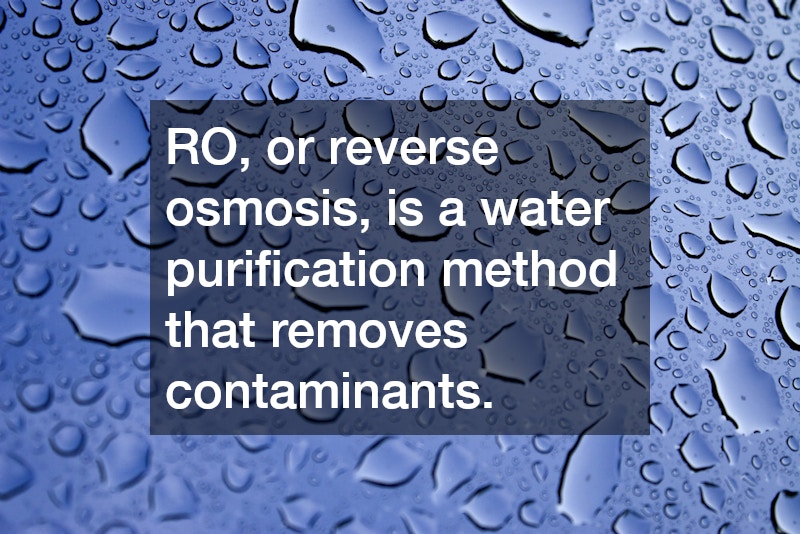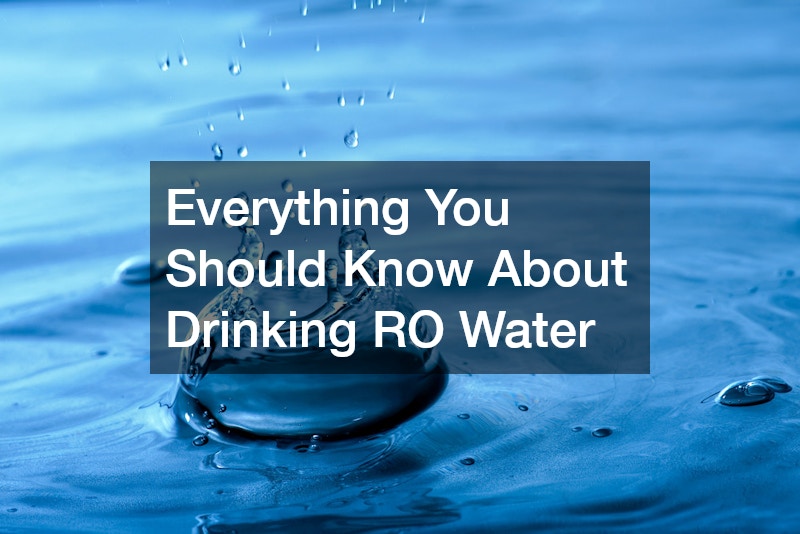With the increasing focus on health and wellness, water quality is a priority for many households. Reverse osmosis (RO) water has gained popularity as a clean and purified option. However, there’s often some uncertainty about its benefits, possible downsides, and the science behind it. Here’s an in-depth look at what you should know about drinking RO water, its purification process, health impacts, and potential considerations.
What Is RO Water?
RO, or reverse osmosis, is a water purification method that removes contaminants by pushing water through a semipermeable membrane. This membrane filters out impurities like chemicals, heavy metals, bacteria, and sediments, leaving behind clean, purified water.
Drinking RO water means consuming water that’s free from many pollutants commonly found in tap water.
The Benefits of Drinking RO Water
1. Removes Harmful Contaminants One of the main advantages of drinking RO water is its ability to remove potentially harmful substances. The reverse osmosis process can filter out up to 99% of contaminants, including lead, arsenic, fluoride, chlorine, nitrates, and various bacteria. This makes it especially beneficial for those living in areas where water quality is subpar or where industrial pollution is a concern.
2. Reduces Sodium Levels For individuals on a low-sodium diet, drinking RO water can be a good choice, as it effectively removes sodium. Unlike other methods, such as water softening, which adds sodium to water to neutralize hardness, RO doesn’t increase sodium levels. This feature makes it a viable option for people with hypertension, kidney problems, or anyone needing to manage their salt intake.
3. Improves Taste and Odor One of the noticeable benefits of drinking RO water is its clean taste. Since the process removes chemicals like chlorine and chloramines, which often impart a distinct odor and taste, RO water tends to taste better than tap water. This improvement in flavor can encourage better hydration habits, as people may be more inclined to drink water that tastes refreshing.
4. Provides a Reliable Drinking Option RO water provides peace of mind, especially in regions where water quality may fluctuate. Many communities face issues with aging infrastructure that may lead to water contamination. By investing in an RO system, you can have a consistent source of purified water in your home, reducing the need to rely on bottled water.
Are There Any Drawbacks to Drinking RO Water?
While drinking RO water offers numerous benefits, there are a few considerations to keep in mind.
1. Removes Essential Minerals One downside to RO water is that the purification process removes not only contaminants but also beneficial minerals like calcium, magnesium, and potassium. Since these minerals are stripped out, some argue that drinking RO water over time could lead to a deficiency. However, it’s essential to note that the primary source of these minerals is food, not water. Drinking RO water should not lead to health issues if you maintain a balanced diet rich in essential nutrients.
2. Can Be Acidic RO water is slightly more acidic than regular tap water. While this acidity is generally mild and not a cause for concern, some people worry that drinking RO water may upset their body’s natural pH balance. However, the human body has robust mechanisms to maintain pH levels, and drinking RO water is unlikely to impact these. For those who still have concerns, adding a pinch of mineral salt or using a re-mineralizing filter can increase the alkalinity of RO water.
3. Wastes Water in the Filtration Process One aspect of RO systems that has raised environmental concerns is water wastage. The reverse osmosis process can produce up to three or four gallons of wastewater for every gallon of purified water. Although many modern RO systems are becoming more efficient, it’s still worth considering the environmental impact. Installing a permeate pump or choosing a more efficient RO model can help reduce water waste.
For those looking to reduce contaminants and have a clean, reliable water source, drinking RO water is an excellent choice. The benefits of purification, improved taste, and reduced sodium make it an appealing option. While there are some minor drawbacks, such as mineral loss and water waste, these can often be mitigated with proper maintenance and thoughtful system selection. As with any health-related choice, it’s essential to weigh the benefits and considerations to find the best solution for your household’s needs. With the right approach, drinking RO water can be a safe and beneficial part of a healthy lifestyle.
.


